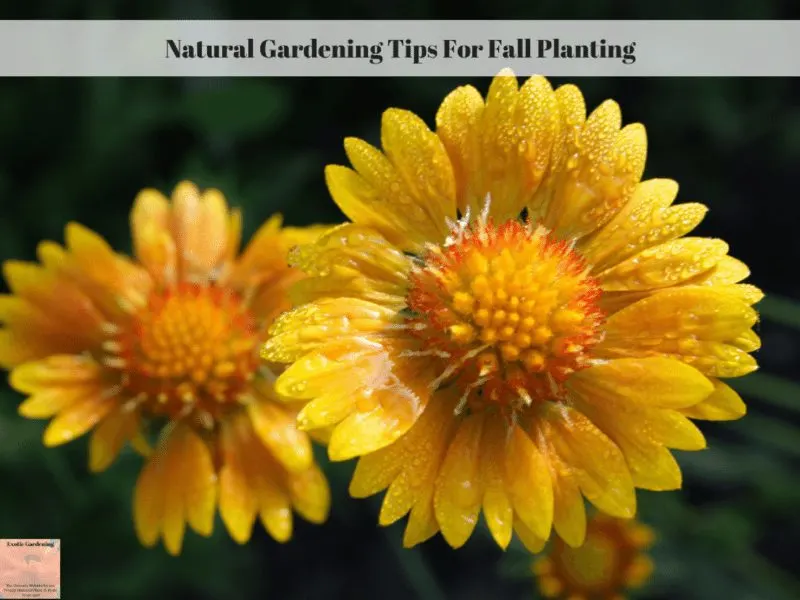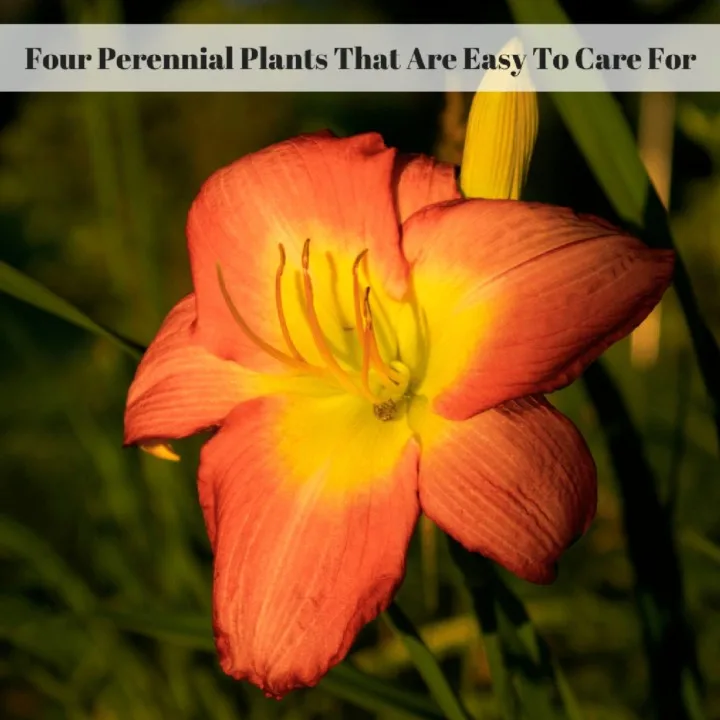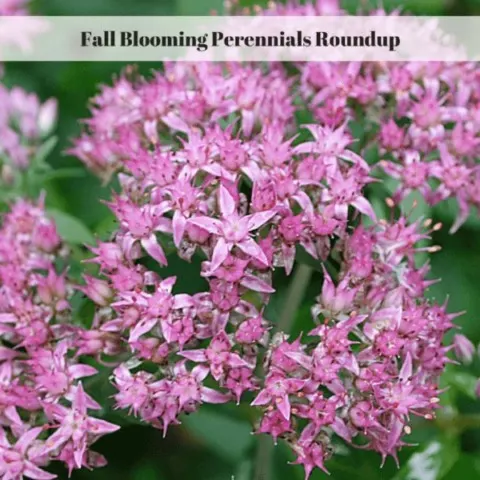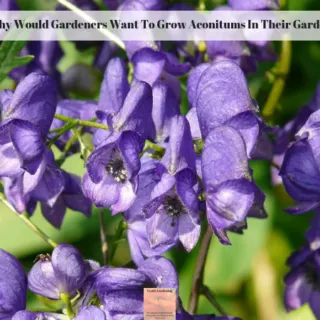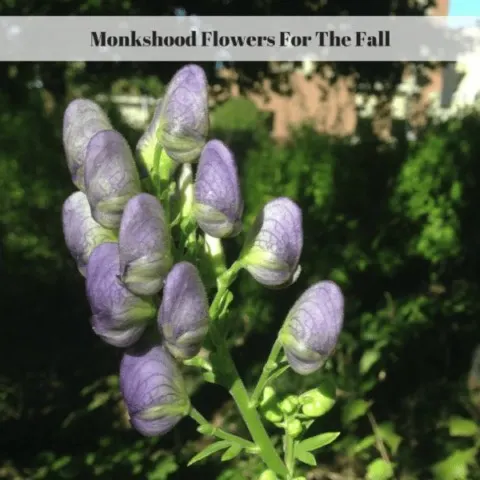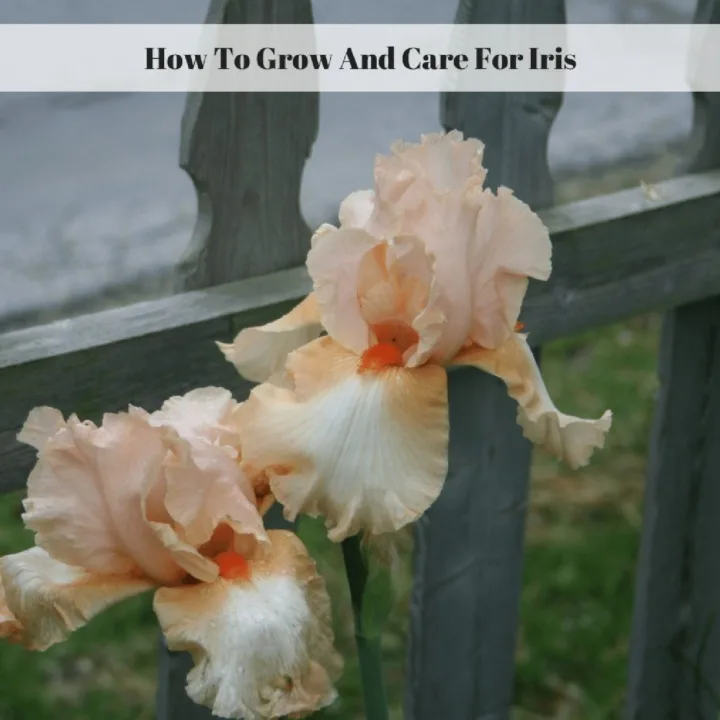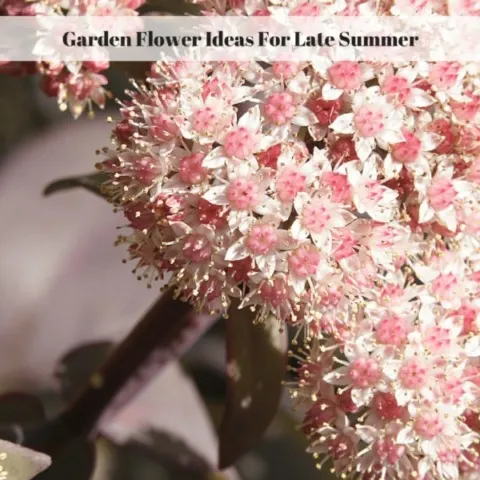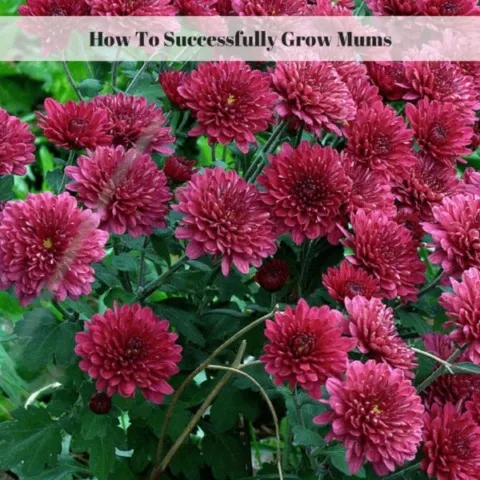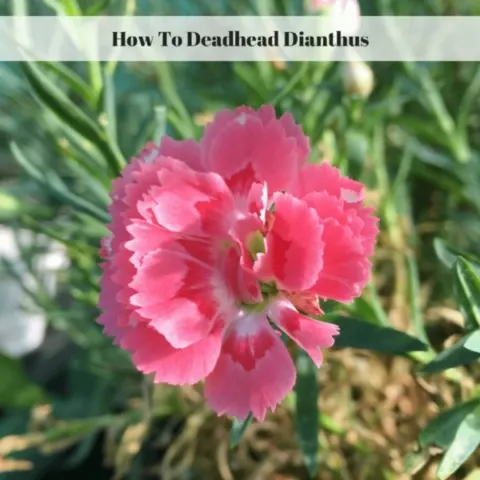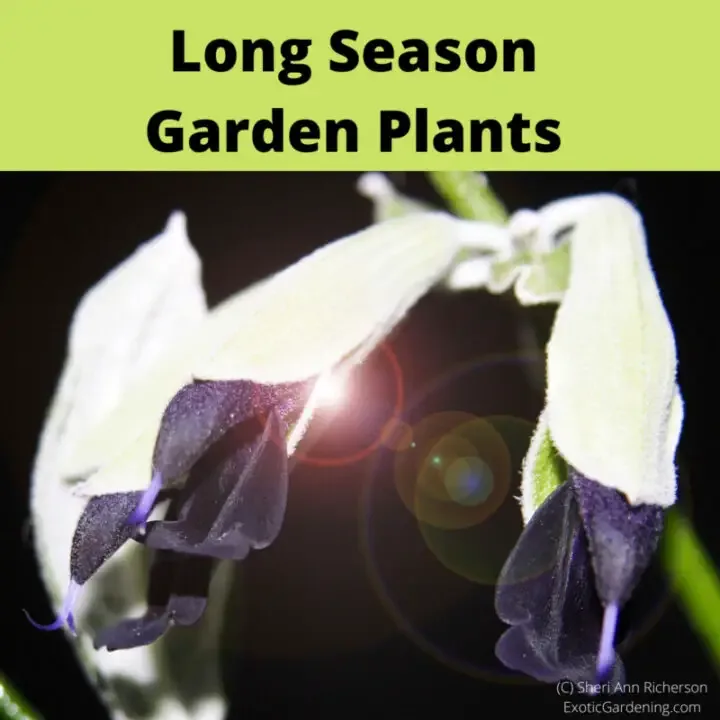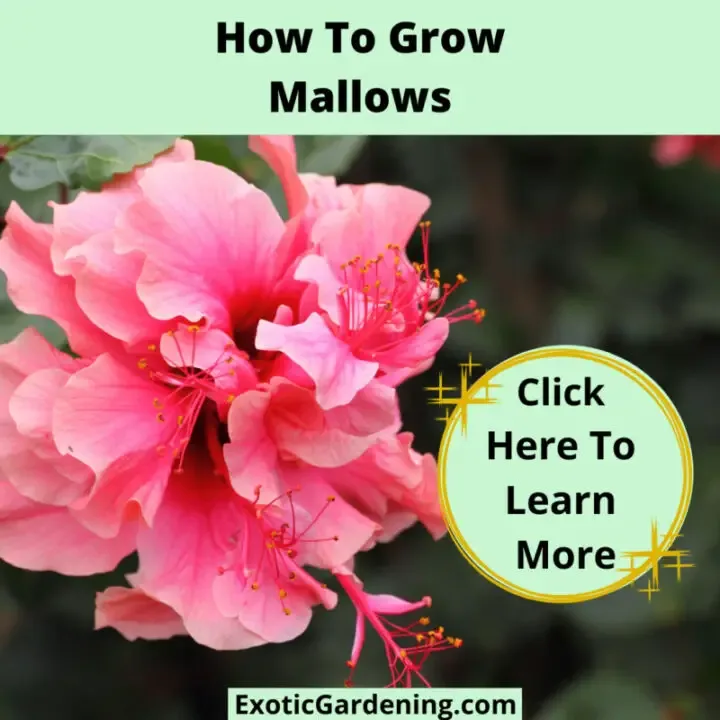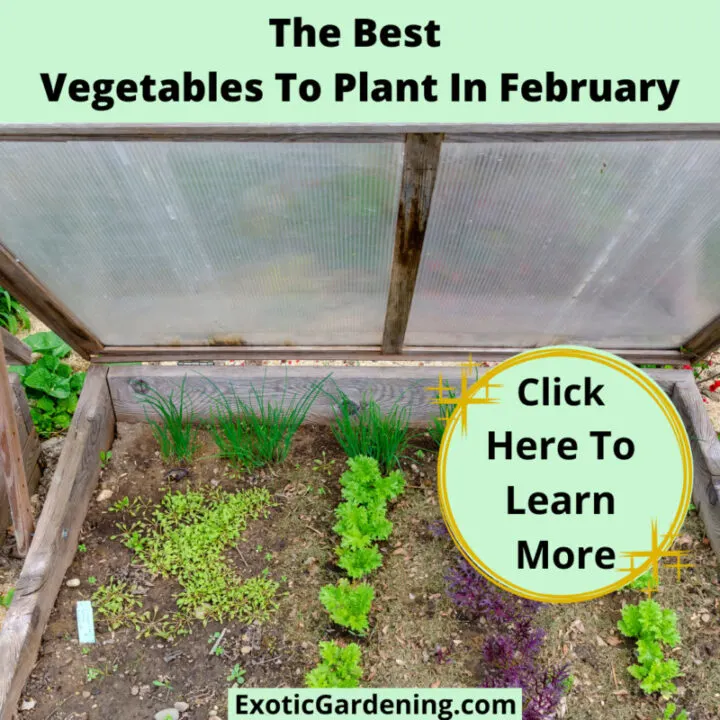Greetings, fellow gardening aficionados!
I'm absolutely thrilled to delve into the world of natural gardening tips for fall planting with you.
There's a unique satisfaction that comes with getting your hands in the soil during the crisp days of autumn, all in preparation for a garden that will burst with life come spring.
And you know what?
We're not just stopping at creating a beautiful garden – we're also going to nurture our planet in the process.
First things first, let's talk about the basics of fall planting.
It's that magical time when the soil is still warm, giving your plants a fantastic head start.
Whether you're into perennials, bulbs, or those late-season veggies, there's something for everyone.
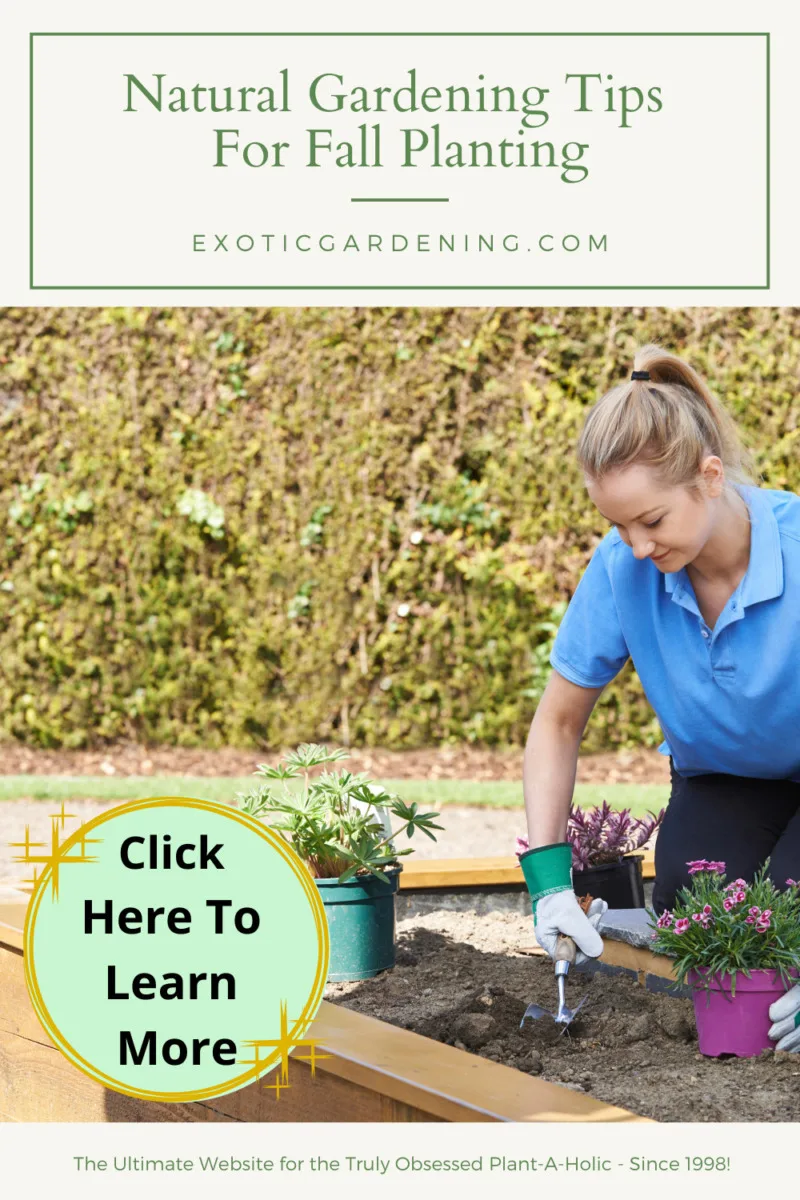
Natural Fall Gardening Tips
Gardening is a great way to enjoy nature and spend time outdoors.
One of the best times to plant is in the fall after the first frost because it’s easy to dig in the soil and it will not be as hard on your plants to acclimate to a new environment.
Fall gardening offers a few benefits including:
- You can take advantage of cooler temperatures.
- You still have plenty of plant options available at your local garden centers.
- The soil is softer, making digging easier and less damaging to plants.
- Your plants will have a better chance at survival during winter months.
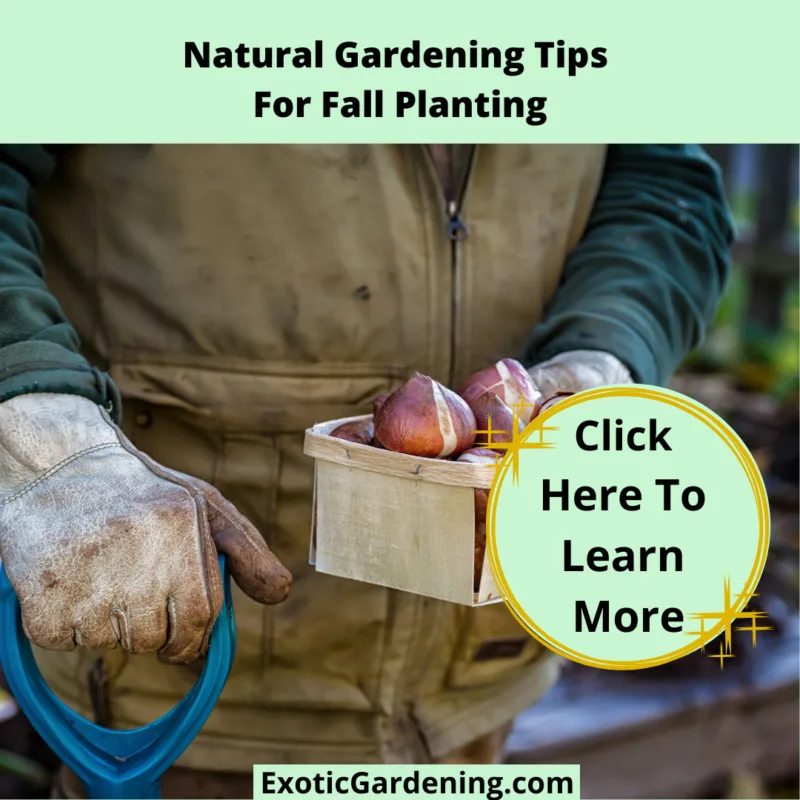
Fall Planting Excitement
It's that golden moment when the earth still holds the warmth of summer, creating the perfect conditions for a spectacular garden next spring.
As you venture into the world of fall planting, you'll find it's a treasure trove for garden enthusiasts of all kinds.
- Perennial Enthusiasts: For those who adore the enduring beauty of perennials, fall is your best friend. Planting now means your perennials have ample time to establish their roots, ensuring a vibrant and low-maintenance garden when warmer days return.
- Bulb Fanatics: If bulbs make your heart skip a beat, fall is your season to shine. It's the time when you can tuck tulips, daffodils, and hyacinths into the soil, like hidden gems waiting to burst forth in a riot of color next spring.
- Late-Season Veggie Growers: And for those with a passion for late-season veggies, the fall garden is your playground. Think of it as a second chance to savor fresh, homegrown produce as you extend your harvest well into autumn and even early winter.
So, no matter your gardening niche, fall planting opens up a world of possibilities.
The earth is your canvas, and the warm soil is your best friend.
Take advantage of this sweet spot to create a garden that will fill your heart with joy come spring.
And remember, this journey is just beginning; there's more eco-friendly wisdom to uncover.
Embracing Eco-Friendly Wisdom in Your Fall Planting Adventure
As we embark on this journey of fall planting, let's not only revel in the anticipation of a beautiful garden but also explore the eco-friendly wisdom that can make our gardening practices kinder to the planet.
It's a journey of discovery, where we uncover the secrets of sustainable gardening.
- Enriching the Soil with Kitchen Scraps and Yard Waste: Picture this – your kitchen scraps, like vegetable peels and coffee grounds, mingling with yard waste like fallen leaves. When composted properly, these materials transform into "black gold" – nutrient-rich compost that breathes life into your soil. It's a sustainable way to nourish your plants and reduce waste.
- The Wonders of Organic Mulch: Imagine a thick layer of organic mulch covering your garden bed like a cozy blanket. Not only does it keep the soil moist and weed-free, but it also regulates temperature, preventing extreme fluctuations. This not only reduces the need for excessive watering but also minimizes the stress on your plants. It's a win-win for your garden and the environment.
- The Art of Companion Planting: In the world of companion planting, different plants play harmoniously with each other. Some release natural chemicals that deter pests, while others provide essential nutrients or offer shade. By strategically pairing plants, you can create a thriving, balanced ecosystem right in your garden.
- The Magic of Rain Barrels: Rain barrels are like eco-friendly superheroes in the world of gardening. They collect rainwater from your roof, which you can use to quench your garden's thirst. Not only does this practice reduce your water bill, but it also lessens the demand on local water resources. It's a small yet impactful way to be environmentally responsible.
- The Beauty of Native Plant Selections: When you choose native plants for your garden, you're selecting flora that has adapted over generations to your specific region. They require less water, less maintenance, and they provide essential habitat and food for local wildlife. It's a beautiful way to support biodiversity and help preserve your local ecosystem.
- Natural Pest Control Solutions: Who wants to drench their garden in chemicals when there are natural pest control options? Neem oil, for instance, is a fantastic choice for keeping many garden pests at bay. You can also introduce beneficial insects like ladybugs and lacewings to help manage unwanted critters. These methods not only protect your garden but also safeguard the environment from harmful chemical runoff.
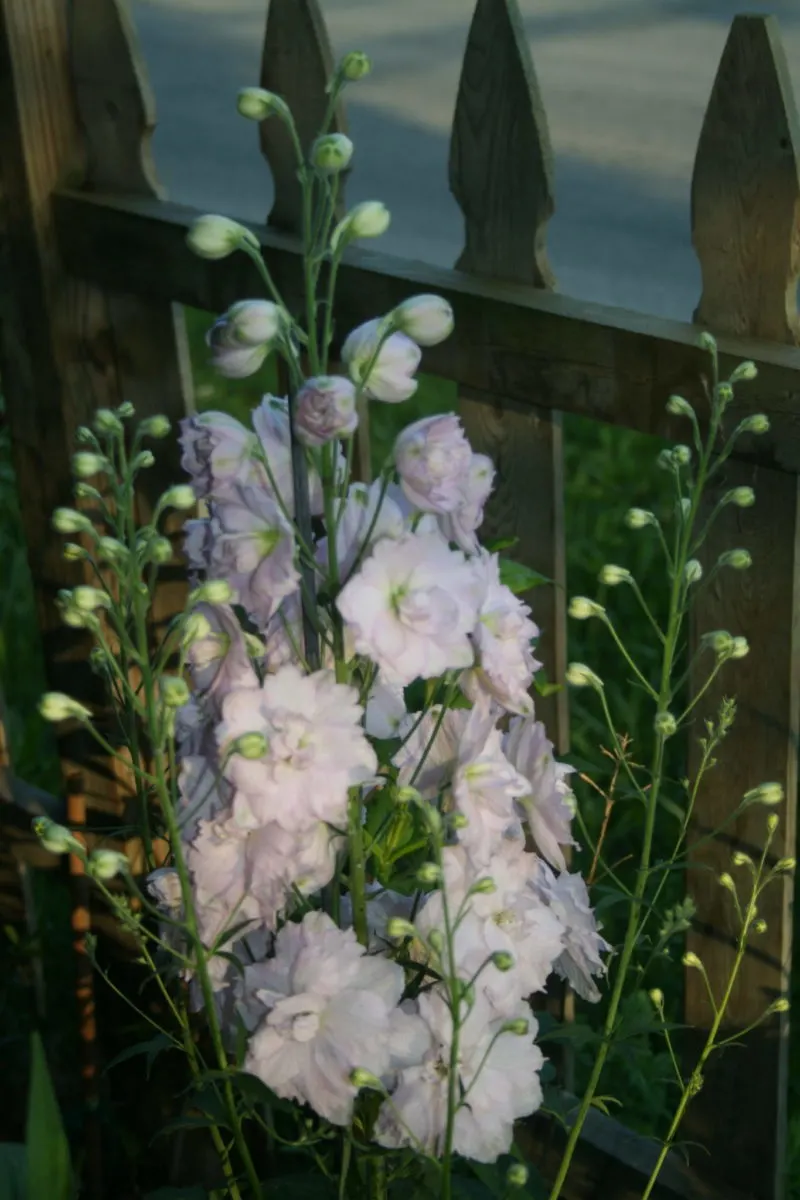
Engaging with Our Gardening Community
But here's the beauty of this journey – it's not just about me sharing insights with you.
I'm eager to hear about your fall planting experiences and the eco-friendly tips you've mastered.
Gardening is a communal passion, and we can learn so much from one another.
So, I hope you will engage with our gardening community by joining our Gardening Year-Round Facebook Group.
It's a wonderful place to share your stories, your challenges, your successes.
It's a safe space where gardeners can exchange ideas, inspire each other, and collectively make our gardens and the world a little greener.
After all, a thriving garden isn't just a testament to our love for plants; it's a reflection of our commitment to a sustainable future.
Natural Fall Gardening Tips
And now, as we step into the heart of our fall planting adventure, let's integrate these natural gardening tips seamlessly into our journey:
1. Assess Your Garden's Needs: Before diving into fall planting, take a step back and evaluate your garden. Look for areas that need attention, whether it's replacing tired plants or addressing soil issues.
2. Trim Back and Prune Perennial Plants: Pruning your perennial plants is a crucial step in fall gardening. Cut back dead or overgrown growth to encourage healthier, more robust plants next spring.
3. Remove Spent Annuals: Bid farewell to your summer annuals. Clearing them out allows you to make space for new fall-friendly options.
4. Clean and Clear Out Garden Beds: Give your garden beds a good cleanup. Remove debris, fallen leaves, and any plant remnants to reduce hiding spots for pests.
5. Inspect for Diseases and Pests: Keep a keen eye out for diseases or pests. Early detection and natural remedies like neem oil can help prevent infestations.
6. Add Mulch or Leaves to Your Garden Beds: Mulch isn't just for weed control; it also helps insulate the soil and preserve moisture. Leaves from your yard are excellent for this purpose.
7. Water and Nourish the Soil: Make sure your plants are well-hydrated before the cold sets in. Consider adding organic compost or aged manure to the soil to provide essential nutrients.
8. Divide and Transplant Perennials: If your perennials have outgrown their space, fall is the ideal time to divide and transplant them to other areas of your garden.
9. Continue to Keep Weeds Under Control: Weeds don't take a break during fall. Maintain weed control by regular weeding or by adding a fresh layer of mulch.
10. Replace Summer Annuals With Fall-Friendly Options: Swap out your summer annuals for fall bloomers like chrysanthemums and pansies. They'll add a splash of color to your garden.
11. Planting Trees and Shrubs: Fall is an excellent time to plant trees and shrubs. The soil is still warm, and they have time to establish their roots before winter.
12. Planting Bulbs for Spring Flowers: Don't forget about those spring bulbs. Fall is the prime time to plant tulips, daffodils, and crocuses for a dazzling spring display.
13. Grow a Fall Vegetable Garden: Extend your harvest season by planting fall veggies like kale, carrots, and Brussels sprouts. Enjoy homegrown produce well into autumn and winter.
14. Protecting Tender Plants: If you have tender plants, protect them from frost with frost cloth.
15. Plan and Make Notes for Next Year: As you wrap up your fall gardening tasks, take a moment to plan for next year. Make notes about what worked, what didn't, and any new ideas you'd like to explore.
These natural tips will not only make your garden thrive but also contribute to the well-being of our planet.
And remember, share your experiences and discoveries with our gardening community in the Gardening Year-Round Facebook Group.
Together, we're nurturing not only our gardens but also a greener, more sustainable world.
Fall Planting Ideas: Embrace the Autumn Bounty
As the leaves turn vibrant shades of red, orange, and gold, and a hint of crispness fills the air, it's a sign that fall has arrived.
But this season isn't just about pumpkin spice lattes and cozy sweaters; it's a golden opportunity for your garden.
Fall planting allows you to sow the seeds for a spectacular spring and keep your garden thriving well into the colder months.
In this section, we'll explore a variety of fall planting ideas, from late-season vegetables to bulbs that promise a riot of colors when the snow melts.
Discover the world of perennials that will grace your garden year after year.
Whether you're a seasoned gardener or just beginning your green-thumbed journey, there's something here for everyone.
Let's dive into the enchanting world of fall gardening and unlock the secrets to a thriving, beautiful garden during the autumn season.
Late Fall Planting Vegetables
As the temperatures dip and the leaves start to fall, there's still a chance to enjoy homegrown vegetables.
Late fall is an ideal time to plant a variety of crops that can withstand cooler weather and even a touch of frost.
- Kale: This leafy green thrives in cooler temperatures and can even taste better after a light frost. It's rich in nutrients and a versatile addition to your fall and winter meals.
- Spinach: Fresh spinach is a delight in salads and cooked dishes. Plant it in late fall for a winter harvest, or even under row covers if you're in a colder climate.
- Garlic: Fall is the prime time to plant garlic cloves. They'll establish their roots over the winter and reward you with robust bulbs next summer.
- Carrots: Sweet and crisp, fall-planted carrots can be harvested even after the ground gets a bit chilly. Consider using mulch to protect them from freezing temperatures.
- Brussels Sprouts: These mini cabbages are known for their nutty flavor. Plant them in late summer for a late fall or early winter harvest.
Bulbs for Fall Planting
When you think of spring blooms, you probably imagine daffodils and tulips.
But to enjoy these vibrant flowers, you need to plant their bulbs in the fall.
Here are some delightful options:
- Tulips: From classic red to unique parrot tulips, there's a variety for every garden. Plant them in the fall, and they'll greet you with a burst of color come spring.
- Daffodils: With their sunny yellow or white blooms, daffodils are a sign that spring is on its way. Plant the bulbs in the fall for that cheerful display.
- Crocuses: These little beauties often push through the snow to show off their purple, white, or yellow petals. Plant crocus bulbs in the fall, and they'll brave the cold for you.
- Hyacinths: Fragrant and lovely, hyacinths are a favorite for spring gardens. Make sure to plant their bulbs in the fall to enjoy their scent next season.
- Alliums: If you're looking for something unique, alliums are the way to go. Their globe-shaped blooms come in various sizes and hues.
Perennials for Fall Planting
For a garden that returns with beauty year after year, fall is a fantastic time to plant perennials.
These enduring plants bring a touch of magic to your outdoor space, ensuring it remains vibrant and full of life season after season.
Here are a few exceptional options to consider:
- Sedum: With its fleshy leaves and late summer to fall blooms, sedum is a favorite for autumn gardens. This resilient perennial not only adds visual charm but also acts as a pollinator magnet, attracting beneficial insects to your garden.
- Asters: These daisy-like flowers come in various shades and bloom late in the season, making them a perfect choice to add a burst of color to your garden just as summer begins to fade. Asters are reliable bloomers that provide a stunning display.
- Mums: Chrysanthemums, commonly known as mums, are a classic choice for fall gardens. Available in a range of colors, they effortlessly brighten up the landscape with their vibrant and cheery blooms. Mums are the perfect choice for adding a pop of color to your autumn garden.
- Helenium: Known as sneezeweed, helenium is another fantastic fall perennial. It graces your garden with vibrant red, orange, or yellow flowers in late summer and fall. Its striking colors create a captivating visual display.
- Russian Sage: This perennial is renowned for its silvery foliage and elegant lavender-blue blooms, evoking a sense of airiness and sophistication in your garden. Russian sage is not only visually delightful but also hardy, making it a great choice for fall planting.
- Additional Perennials: To further diversify your fall garden, consider these hardworking plants:
- Aster
- Cape Fuchsia
- Catmint
- Coreopsis
- Delphinium
- Gaillardia
- Gaura
- Lavender
- Penstemon
- Scabiosa
- Salvia
- Shasta Daisies
- Yarrow
- Verbena
These additional perennials expand your options for creating a vibrant and colorful garden that's sure to delight.
When selecting perennials, it's essential to choose specimens that are at their best at the garden center or nursery.
While it's possible to revive clearance sale plants, be aware that they might not withstand a severe winter.
Fall planting opens up exciting possibilities for your garden.
Whether it's the allure of fresh vegetables, the vibrancy of flowers, or the reliability of perennial plants, there's no shortage of options to enhance your outdoor space during the autumn months.
This season is all about renewal and preparation, setting the stage for a spectacular garden in the coming year.
If you have any more insights, details, or requests to add, please feel free to share.
Your journey to a thriving and colorful garden this fall is in full swing!
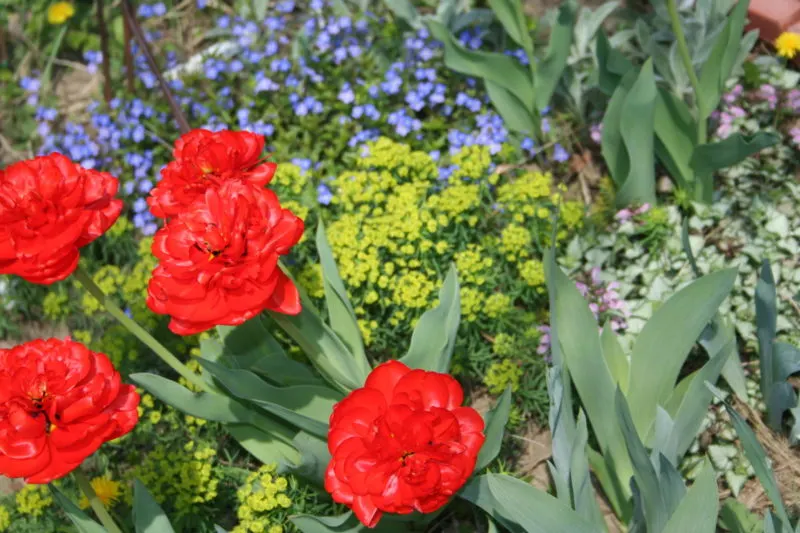
Interplant Perennials With Bulbs
When planting autumn perennials, don't forget to choose some spring blooming bulbs such as tulips, daffodils and hyacinth to add color early in the season.
Choose bulbs that will naturalize for best results.
I like using a few groundcover plants as well because they fill in around the bulbs and perennials.
This helps cut down on the amount of mulch you need and also helps prevent weeds - naturally.
Here is how to interplant bulbs and perennials:
- Dig each planting hole about ten inches deep.
- Mix some compost in with the existing soil.
- Return some of the amended soil to the hole.
- You will plant the bulbs first, so if they need to be planted eight inches deep, you will add two inches of soil to the hole, then set the bulbs in place.
- Make sure to keep all of the bulb wrappers and packages picked up.
- Critters such as squirrels will search above ground for bits of bulb wrappers.
- Once they find bits and pieces of bulbs or bulb wrappers, they begin searching for the newly planted bulbs.
- Once the bulbs are in place be sure to cover the top of the bulbs with amended soil, then plant your perennials directly above them.
- Add more compost as a top dressing when you are done.
- Water your new plants well.
What To Expect In Spring
When spring arrives the bulbs will come up and flower.
Once those flowers fade the perennial foliage will begin to emerge.
The newly emerging perennial foliage will help hide the dying bulb foliage.
Within a short time the perennials will be flowering where the bulbs once were.
When choosing perennials and bulbs, be sure to plant a few that bloom early, some that bloom mid-season, and some that bloom in the fall so you get a succession of bloom throughout the season.
Following these tips is sure to make your garden lush and colorful.
FAQ: Unlocking the Secrets of a Thriving Autumn Garden
Q. What is the best time for fall planting?
A. Fall planting is ideal when the soil is still warm but the air is cooling down. Typically, it's from late August through October, depending on your climate.
Q. Can I plant perennials in the fall?
A. Absolutely! Fall is a great time to plant perennials. The warm soil allows them to establish strong roots for a vibrant spring display.
Q. When should I plant spring bulbs like tulips and daffodils?
A. Plant spring bulbs in the fall, about 6-8 weeks before the first hard frost in your area. This ensures they have time to root before winter.
Q. What's the benefit of companion planting in the garden?
A. Companion planting enhances the garden ecosystem. Some plants deter pests, while others provide nutrients and shade. It promotes healthier, more balanced plant growth.
Q. How can I protect my garden from pests naturally?
A. Consider using natural remedies like neem oil and introducing beneficial insects like ladybugs. These methods help manage pests without harmful chemicals.
Q. What are the advantages of using rain barrels in the garden?
A. Rain barrels collect rainwater from your roof, reducing your water bill and lessening the demand on local water resources. They're eco-friendly and cost-effective.
Q. What are some good native plant choices for my garden?
A. Native plants have adapted to your region. Consider options like milkweed, coneflowers, and native grasses. They require less maintenance and support local wildlife.
Q. How can I extend my vegetable harvest into the fall?
A. Plant fall vegetables like kale, carrots, and Brussels sprouts. They thrive in cooler temperatures and provide a fresh harvest well into autumn and winter.
Q. What's the purpose of adding mulch to garden beds?
A. Mulch helps retain soil moisture, regulates temperature, and prevents weed growth. It's a natural way to protect your plants and minimize watering.
Q. What's the best way to assess my garden's needs in the fall?
A. Take a step back and evaluate areas that need attention. This includes replacing tired plants, addressing soil issues, and planning for the next season.
Q. How can I protect tender plants from frost during the fall?
A. Use frost cloth or even milk cartons with the bottom cut out to shield tender plants from frost damage. Ensure they are securely covered during cold nights.
Q. Is fall planting more eco-friendly than spring planting?
A. Fall planting is eco-friendly because it conserves water and requires fewer resources. The warm soil helps plants establish roots for a strong start in spring.
Q. What's the advantage of joining the Gardening Year-Round Facebook Group?
A. The group is a place to share gardening stories, challenges, and successes. It's a supportive community for exchanging ideas, inspiration, and eco-friendly gardening tips.
Q. How can I make my garden more sustainable for the environment?
A. Embrace eco-friendly practices like composting kitchen scraps, using organic mulch, planting native species, and reducing chemical pesticide use. These steps benefit your garden and the planet.
Q. What are the key takeaways for a successful fall planting season?
A. Focus on planting perennials, bulbs, and fall veggies. Embrace eco-friendly gardening practices, engage with the gardening community, and plan for future seasons to ensure a thriving and sustainable garden.
Perennial Plants
Awesome Colorful Plant Combinations: Reliable Daylily And Geranium
If you're looking for a colorful, easy to care for perennial plant combination, try the daylily and geranium.
How To Successfully Grow Mums
Chrysanthemums, commonly referred to as mums are a beautiful fall blooming plant. Check out these tips to successfully grow mums!
Long Season Garden Plants
Long Season Garden Plants
How To Grow Mallows
Learn how to grow mallows, a Malvaceae family which includes some of the most popular plants for the home garden, Hibiscus.
Popular Plants For Miniature Gardens
There are a number of popular miniature plants that are ideal to use to create miniature gardens inside or outside your home or office.
Sweet Autumn Clematis: A Garden Treasure
Discover the enchantment of Sweet Autumn Clematis: rapid growth, fragrant blooms, and versatile garden beauty await!

